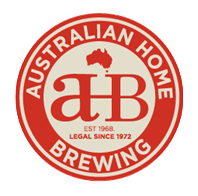Step by Step Beer Making Instructions

Click through for step by step beer making instructions, As always we are happy to help with any questions that arise so feel free to call anytime !
Stage 1- PREPARATION
| 1. | Clean & sterilise your equipment. Instructions are provided. |
| 2. | Put the yeast aside for the fermentation stage. |
| 3. | Dissolve the contents of the can in 2 to 4 litres of very hot water in a sterilised bucket. Use less hot water in hot weather & more in cold weather. Add 1kg of good quality brewing sugar and stir to dissolve. We recommend Brewcraft #15 Brew Booster for your first brew. DO NOT USE SUGAR. |
| 4. | Add about 10 litres of cold water to your fermenter, transfer the hot mixture from the bucket to your fermenter & mix thoroughly. Top up with cold water to the 22.5 litre mark. |
Stage 2- FERMENTATION
| 1. | Sprinkle the yeast onto the surface. |
| 2. | Seal the fermenter, fit the airlock and half fill it with cool boiled water. |
| 3. | Allow the brew to ferment. Try to keep the temperature in the fermenter reasonably constant in the low 20's and try to avoid it falling below about 18ºC. Typically this takes about a week. |
| 4. | Fermentation is finished when the airlock stops bubbling and the brew itself begins to clear. Allow a further 48 hours for it to clear thoroughly. |
Stage 3 - BOTTLING
| 1. | Sterilise the bottles & rinse with cool boiled water. |
| 2. | Place carbonation drop(s) in each bottle. You need 1 drop for 330ml bottles & 2 drops for 650-750ml bottles. |
| 3. | Fill each bottle to within 50mm of the top. |
| 4. | Close each bottle with a crown cap and seal it firmly with a capping tool. |
| 5. | Shake the bottles several times during the first few hours to make sure the carbonation drops are completely dissolved. Stand the bottles in a warm spot (say around 20 to 22ºC.) for about a week then store in a place where the temperature is stable & not hot for at least another 2 weeks before sampling. |
Stage 4 - MATURATION
Homebrew improves greatly with bottle ageing and will not go off in the bottle at all. A six month old beer will be very much better than a one month old beer. So, try to age your beers, you will enjoy them much more. In fact, you will be amazed at how much your aged beers have improved.
The best place to mature your beer is a place where the temperature does not fluctuate and is reasonable cool. Bottles should be upright while maturing.
Don't forget to label and date each batch. Keep samples to try at 3, 6 and 12 months old. Take notes about how they taste then you will see for yourself how this amazing improvement works.
